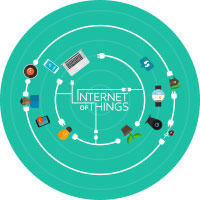
by Symmetry Electronics Corporation
ATOP 2.5G is Telit's platform for automotive telematics on-board units (OBU's).
ATOP 2.5G is Telit’s platform for automotive telematics on-board units (OBU‘s). It simplifies creating applications such as road pricing and eCall by including all required technologies:
• 2G cellular for voice and data communication,
• Quad band GSM assures global network coverage,
• GPS for location,
• Application processor running Java J9 Virtual Machine for simple portability and creation,
• Dedicated processor for Real-Time and connection to system via CAN, USB, Ethernet, UART, ADC,
• SmartMX smartcard CPU with Java card JCOP OS for security,
• NFC for short range communication, e.g. for configuration or ID,
• Forward compatibility with ATOP 3.5G,
• Designed for automotive markets.
ATOP 2.5G can stand alone as a complete solution for GPS/GSM-based road pricing and eCall applications. Or harness more of the processing power and software application environment on board to complement basic services with any other added value telematics services. ATOP 2.5G can also be applied as a front end for more elaborate telematics products in the OBU. You control all of the code, thereby avoiding recertification issues. Thanks to on-board ATOP 2.5G security resources, product developers and manufacturers can offer devices which guarantee fraud prevention and tamper evidence without the extra effort of additional security precautions. Your device can be used in end-to-end transaction systems requiring Common Criteria level 5+.
The ATOP 2.5G is the original member of Telit’s telematics platform family. It was created to support almost all conceivable telematics applications. Our design vision: just add a power supply, speaker and mic, some sensors, a box and ATOP can be almost any telematics application, line-fit or after-sales. Of course automotive quality, trusted security and software competence are our most important commitment to the customer. The foundation for the upgrade path to ATOP 3.5G and ATOP 4G was laid here - form factor and pin-to-pin compatibility; same software interfaces so your code is binary compatible; same peripherals for car-connectivity; same security chip for authentication, and compatible utility CPU for car connectivity. Your investment in software and hardware engineering is entirely reusable.